Last week I asked a barista at Starbucks when they’re most and least busy. She quickly shared a few times with me; I thanked her and sat down. Thinking about it, the times she gave me differed radically from my own experiences. Pondering further I realized that we were using the word “busy” differently: Busy for me meant that the tables were full, and I wasn’t going to be able to come in and work, busy for her meant customers or transactions per minute.
There’s a lesson here, and one I want to learn from. It’s incredibly easy to talk past someone, and make assumptions about understanding.
I love photography, I own a bunch of cameras, and have managed to lose a few along the way. When the Lytro was announced a while back I was quite interested, and with a reasonable price point, I pre-ordered. It's arrived, and I've had a few chances to play with it. Including last night while playing A ticket to Ride
Sample Images
Cards & Trains (click for larger image)
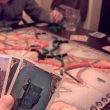
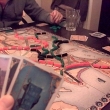
As you've noticed, the two images are focused at different depths. The cards are in focus in the first image, while the trains on the board are focused in the second. The interesting point is that I only took one picture. I selected which point to focus on after the image was taken, either in camera (via a touch screen), or via their software. You can even change the focal point yourself in that image via their website. I find the effect works really well in the short to medium range, switching between two distant objects doesn't affect much, as we'd expect with such a small lens.
Pros:
- It's nice to be able to play around with images after the fact
- It's a fun form factor for a camera, easy to fit in a bag
- It's light
- It's cheap in camera terms
Cons:
- I'm not impressed with the Colour Performance, even with lots of light
- The lens cap is useless, it sticks on magnetically, but falls off with even a glancing touch
- Exported image quality isn't great
- Lytro software isn't that powerful, I need to export to jpg before I can do any real work
- LCD Screen has rather low resolution. Apple went Retina, Lytro went the other direction.
Comparison Shots
I tried to take basically the same picture of flowers with my iPhone 4, Lytro, and Nikon D80 (which sells for around $400 on eBay).
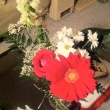
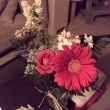
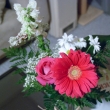
iPhone photo was taken on an iPhone 4, pulled off the camera with iPhoto, cropped and resized down to 1024x1024 in Photoshop, then exported using 81% jpeg. Lytro was imported using their software, the focal point was set to the flower, and it was exported at the only available resolution. D80 Photo was pulled off the card with Lightroom, cropped and white balanced in Lightroom, then exported.
Conclusion
Overall, I'd say it's a fun gimmick, very much a "point and shoot" camera. It's a fun thing to throw in the bag to play with, but I generally know where my focal point is when I'm shooting. I can't think of a time that I wanted to change it after the fact. I have been in situations where I wish I could have focused better after the fact, but generally there I'm dealing with items that are far enough away that the Lytro wouldn't matter. They're pretty cheap (by photography standards), and the technology will only get better.